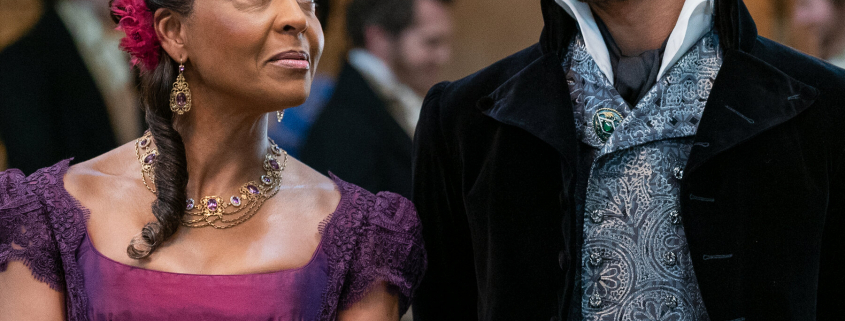Hustle and Fro: Dear Netflix, don’t be afraid of the dark

Growing up, representation was a big thing for me. Seeing someone on screen that looked like me made visualizing goals and achievements possible. So, when I heard that Netflix was building up its representation for Black and Indigenous people and people of color, I was excited until I started recognizing a trend. The representation for many Black women on screen fits the mold with a preference for light-skinned actresses.
As of recently, I’ve seen changes made to the Netflix home screen with collections like “Representation Matters” and “Black Lives Matter,” but in most cases, lighter complexioned women are at the forefront and given thought out and positive character development.
Why not start with a look at the steamy period-romance that is, “Bridgerton?” From the first look at the cast, it looks like the majority of the protagonists are white men and women, which isn’t surprising for a Regency-era English drama. Upon closer look, though, there are actually two Black women: one who is lighter-skinned, Marina Thompson, and the other who is darker, Lady Danbury.
Lady Danbury acts as a sort of maternal figure to the leading man, Simon, and is both widowed and without a family. On the other hand, Marina Thompson is a debutante looking to find a husband as an eligible bachelorette.
While the show does consider itself a romance, it is a bit disappointing that the only dark-skinned woman depicted in high society doesn’t receive it at all. This is very reminiscent of an interview Viola Davis, a darker-skinned actress, had with Entertainment Weekly where she mentions how none of her characters have been in the position for romance.
“I was not able to be sexualized. Ever. In my entire career,” Davis said. “And here’s the thing that’s even more potent: I’ve never seen anyone who even looks like me be sexualized on television or in film. Ever.”
Similarly, “All American,” also had its moments. Though not a Netflix original, it was added to the streaming service and gained popularity among many young adults. The show follows Spencer, a high school football player from South Central, who gets the chance to play at Beverly Hills High School, so a majority Black cast isn’t unexpected.
Much like “Bridgerton,” though, many of the Black female main characters are lighter-skinned women like Olivia Baker and Layla Keating. In the show, Baker is Spencer’s best friend and Keating is Beverly Hills High School’s “It Girl.” With both characters as love interests and experiencing the highs and lows of high school, it’s much different for the darker women portrayed … and there are only two.
One of the first darker Black women depicted is Spencer’s mother, Grace, who raised him as a single mom and at times struggles with raising two boys. This trope of the Black single mother has been around for years, from actress Diahann Carroll in the 1974 movie “Claudine” to Tyler Perry’s 2014 movie “Single Moms Club.”
Luckily, there is another darker-skinned Black woman in the show named Tamia “Coop” Cooper who gets to experience love but then struggles with her sexuality. Later in the show, she also seems to get into gang-related activities, which is a bit disheartening because of the correlation between Black characters and negative television portrayals.
In a study called “#Representation Matters,” done by the National Research Group, over 83% of Black Americans think “Hollywood perpetuates negative stereotypes of Black people,” and, in many cases, it seems that the correlation is with darker people, especially when people associate darker skin with immoral acts.
To further illustrate this idea, the show “Dear White People” is very similar in nature. The show centers around Samantha White, a lighter complexioned woman at a predominantly white college. She has a darker-skinned best friend named Joelle Brooks, who sadly is not as well developed of a character as White. In most cases, Joelle is Sam’s right-hand woman with, seemingly, no life of her own.
While White is running a podcast and championing for Black students on campus, Brooks is usually seen stress eating or working out as hobbies. Much like the other shows mentioned, White constantly has men vying for her attention, like students Reggie and Gabe, but Joelle is left pining, thus leaving the dark-skinned sidekick underdeveloped and overly reliant on others.
There’s a common theme amongst all of these shows, whether it be darker Black women aren’t deserving of love or they fit the mold of common negative Black stereotypes. When Netflix preaches its inclusion, especially with its social media account “Strong Black Lead,” it still feels that its programming falls into old tropes. As a darker Black woman, seeing these portrayals is a bit discouraging, especially when I see what can be done. So to Netflix, casting directors and the media industry: Don’t be afraid of the dark.

